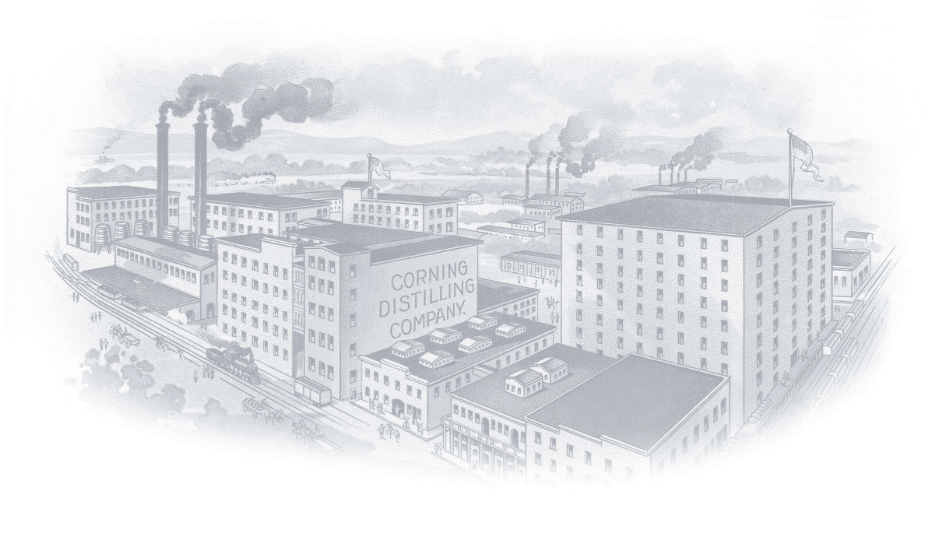
A Corning & Company Perspective
Over three centuries, spirits branding has evolved from anonymous barrels traded by reputation to billion-dollar identities commanding global loyalty. This transformation mirrors the broader industrial, regulatory, and cultural forces that shaped modern commerce. What began as a promise of purity has become a statement of belief — one that connects history, craftsmanship, and consumer identity.
Before the rise of trademarks and advertising, whiskey, rum, gin, and other spirits were sold as commodities, not brands. Products were drawn directly from barrels at taverns and general stores, and quality rested solely on the reputation of the local distiller. Packaging was nonexistent or improvised; markings on corks or barrels were used primarily for taxation.
In this era:
The concept of a brand had yet to exist.
Industrialization changed everything. Mass-produced glass bottles, rail transport, and trademark laws allowed distillers to build consumer trust at scale.
Brands became a symbol of authenticity in an era rife with adulteration and counterfeit spirits. For the first time, a name on the bottle guaranteed what was inside.
Pioneering brands included:
Branding became a contract of trust between producer and consumer.
The early 20th century reshaped spirits branding under pressure. U.S. Prohibition (1920–1933) decimated domestic producers, while Scotch and rum houses expanded abroad. Only a few American distilleries survived through medicinal whiskey licenses, cementing their reputations.
Post-Repeal, brands leaned heavily into heritage and respectability to distance themselves from bootleg culture. Meanwhile, international players — Dewar’s, Chivas, Gordon’s, Bacardi, and Cuervo — defined global quality standards.
Branding became a symbol of legitimacy and heritage.
By mid-century, spirits branding entered its mass-marketing era.
The bottle no longer just conveyed trust — it represented a lifestyle.
Brand identity was now aspirational, glamorous, and global.
The late 20th century brought the pendulum back toward craft and authenticity — but with luxury aesthetics. Consumers began to seek provenance, design, and story.
Packaging design became as critical as liquid quality. The bottle itself was a visual proof of story.
The current era is defined by a new kind of authenticity — transparent, human, and inclusive.
Modern brands like Uncle Nearest, Tito’s, Monkey 47, and Clase Azul embody this shift — brands as movements, not just products.
|
Era |
Core Purpose |
Defining Attribute |
Example |
|
1800s |
Trust |
Purity & Consistency |
Old Forester |
|
1900s |
Lifestyle |
Aspiration & Design |
Absolut, Bacardi |
|
2000s+ |
Belief |
Authenticity & Transparency |
Uncle Nearest, Patrón |
The progression is clear:
Trust built the foundation. Lifestyle scaled it. Belief sustains it.
The next decade will fuse heritage with technology and purpose:
The future belongs to brands that connect truth with technology — those that make belief as tangible as the bottle in your hand.
Corning & Company is an industrial services platform serving small and mid-sized craft beverage alcohol brands across production, packaging, logistics, compliance, marketing, and sales. Our integrated route-to-market approach empowers emerging brands to compete on trust, design, and storytelling — the three pillars that have defined spirits branding for centuries.

Leveraging Corning & Company’s Platform Model to De-Risk and Accelerate Growth in a Highly Regulated...

On-Premise, Off-Premise, and E-Commerce (Excluding Conglomerate-Owned “Craft” Brands) Published by Corni...

Why craft producers should stop going it alone and start compounding advantages with Corning & Compa...